World 🢖 North America 🢖 Mexico 🢖 San Luis Potosí
Sinkholes 🢔 Caves 🢔 Geological wonders 🢔 Categories of wonders
Wonder
Hoya de las Guaguas
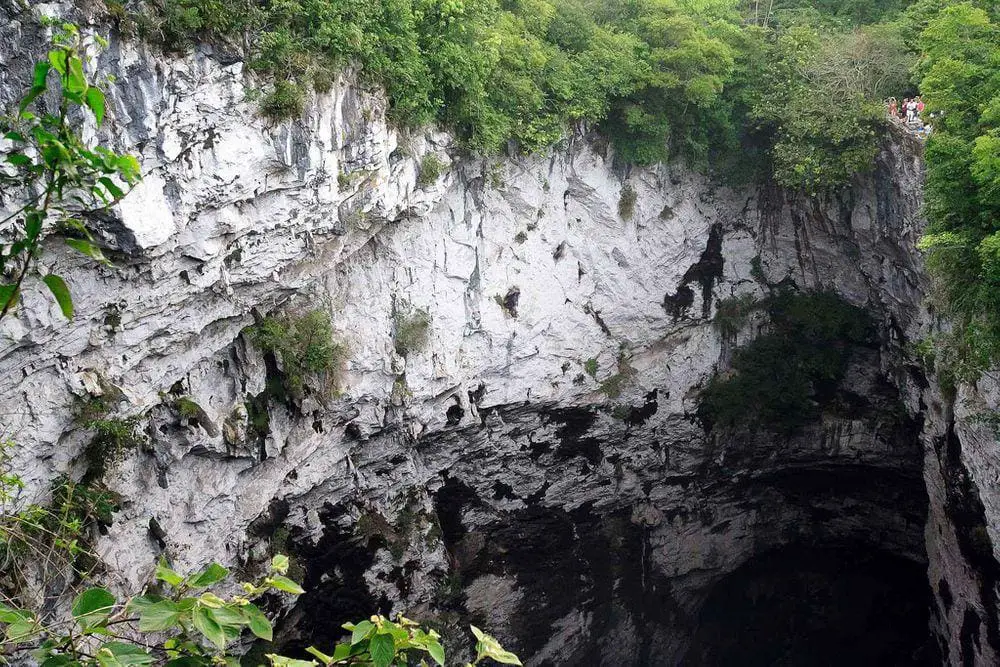
 In short
In short
The ancient land of Huastecs in Sierra Madre Oriental mountains is extremely rich with amazing natural attractions. One of them is the enormous sinkhole – Hoya de las Guaguas.
 47.3%
47.3%
GPS coordinates
Location, address
Alternate names
Depth
Volume
Map of the site
If you see this after your page is loaded completely, leafletJS files are missing.
 In detail
In detail
Giant hole in tropical forest
Hoya de las Guaguas is the largest sinkhole by volume in San Luis Potosí, beating in this respect even the famous Sótano de las Golondrinas.
Entrance into this sinkhole is located in the beautiful tropical forest covering the Sierra Madre Oriental mountains. The sinkhole has been shaped by water in lower Cretaceous limestone.
Entrance shaft is an impressive hole, 70 by 45 m large. The maximum depth of this hole is 202 m, but ascent can be made at 143 m depth as well. It looks like an incredible abyss amidst the lush wilderness of the tropical forest. The walls of the abyss are covered with a thick blanket of lichen and moss. Sunlight reaches the bottom of the first chamber for a few hours per day and here grow large ferns – up to 1.5 m tall. The air in the sinkhole is moist and chilly.
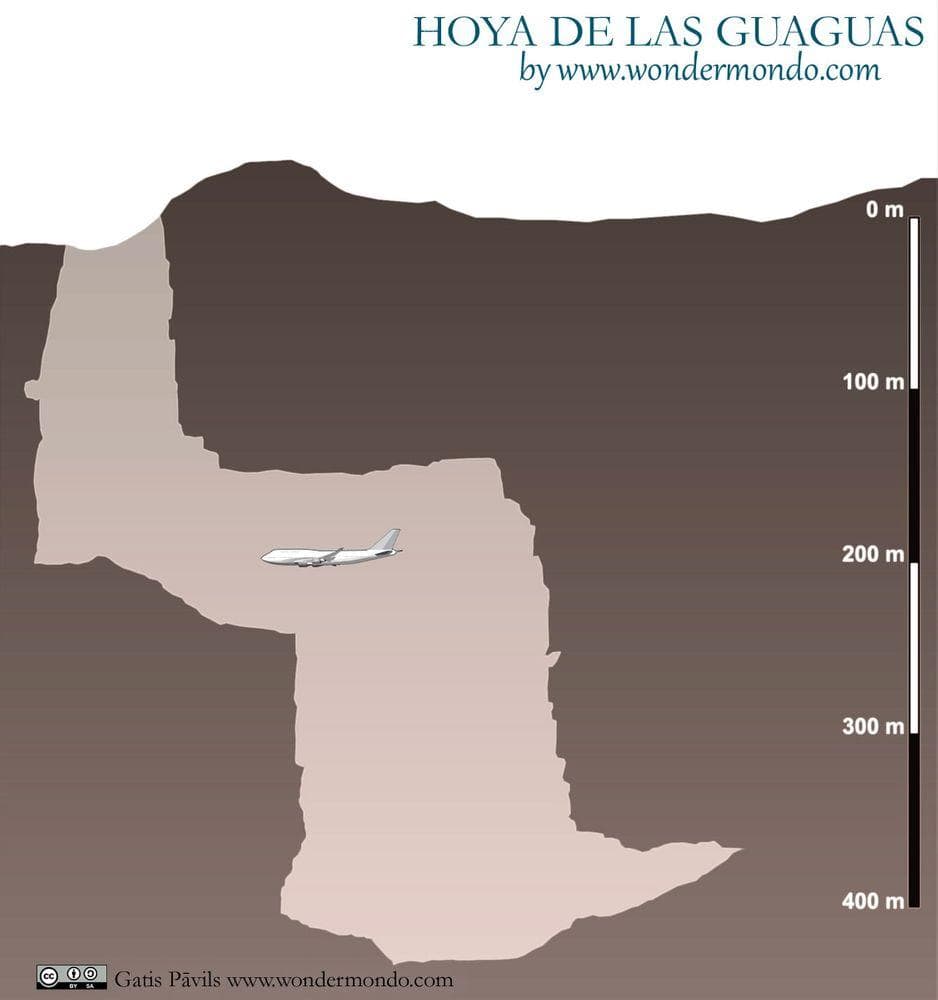
Length of the first chamber is approximately 224 m, width at the widest part – 159 m.
Soon after the first abyss there comes next – it is 153 m deep. The entrance in this next part is 90 m tall and 80 m wide. Here the cave becomes even larger and this chamber belongs to the largest cave chambers in the world. It is 184 m long, 158 m wide and up to 290 m tall.
Floor of this deeper chamber is uneven, with lots of blocks collapsed from the roof. Here comes very little natural light. Here among the enormous blocks of rock was found a crevice which brings the total depth of the sinkhole to 478 m. The floor of the sinkhole most certainly is further below.
Cave was researched by Mexican cavers in 1967 – 1968.
Swifts
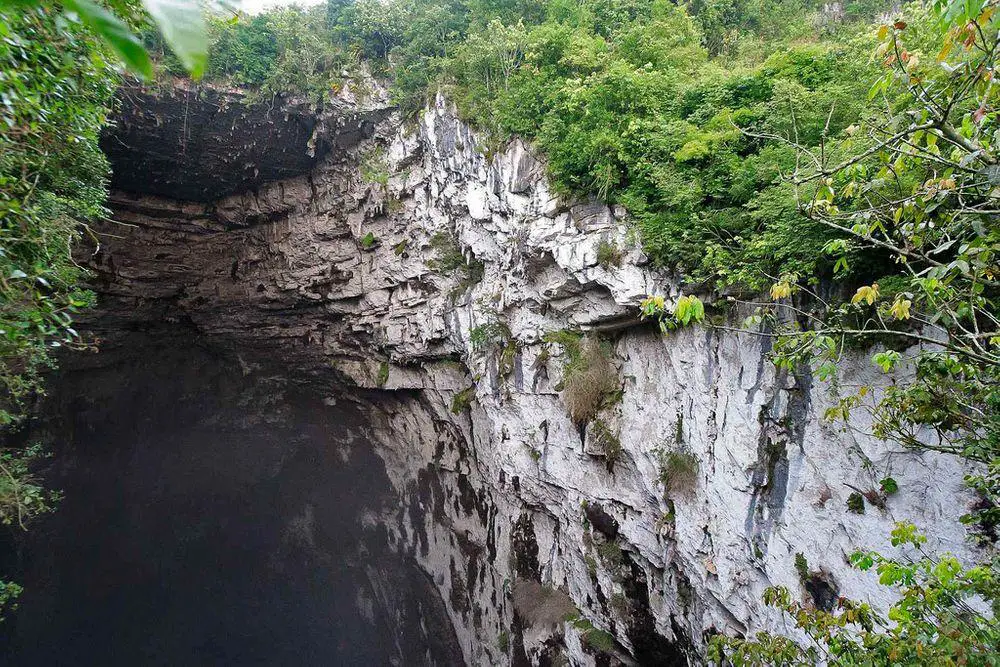
Similar to Sótano de las Golondrinas here live thousands of white-collared swifts (Streptoprocne zonaris Shaw, 1796) in the holes of walls. Birds use this natural wonder as an opportunity to protect their nests. But this ends up with numerous predators waiting at the entrance of sinkhole – thus swifts have to fly possibly fast past the entrance. In evenings the birds gather in large swarms and then all simultaneously fall into it with whistling sound.
In the morning, as their day starts, swifts ascend the giant cave – they fly in circles, gradually rising up to the entrance. This is very impressive sight luring many tourists to this sinkhole.
Cave has been named aftter parrots who also live here. Parrot in Huasteca language is "guagua".
References
- Hoya de las Guaguas by G.M.Alta Ruta.com. Accessed on July 10, 2010
- Hoya de las Guaguas by PromoTurQueretaro.com. Accessed on July 10, 2010
 Linked articles
Linked articles
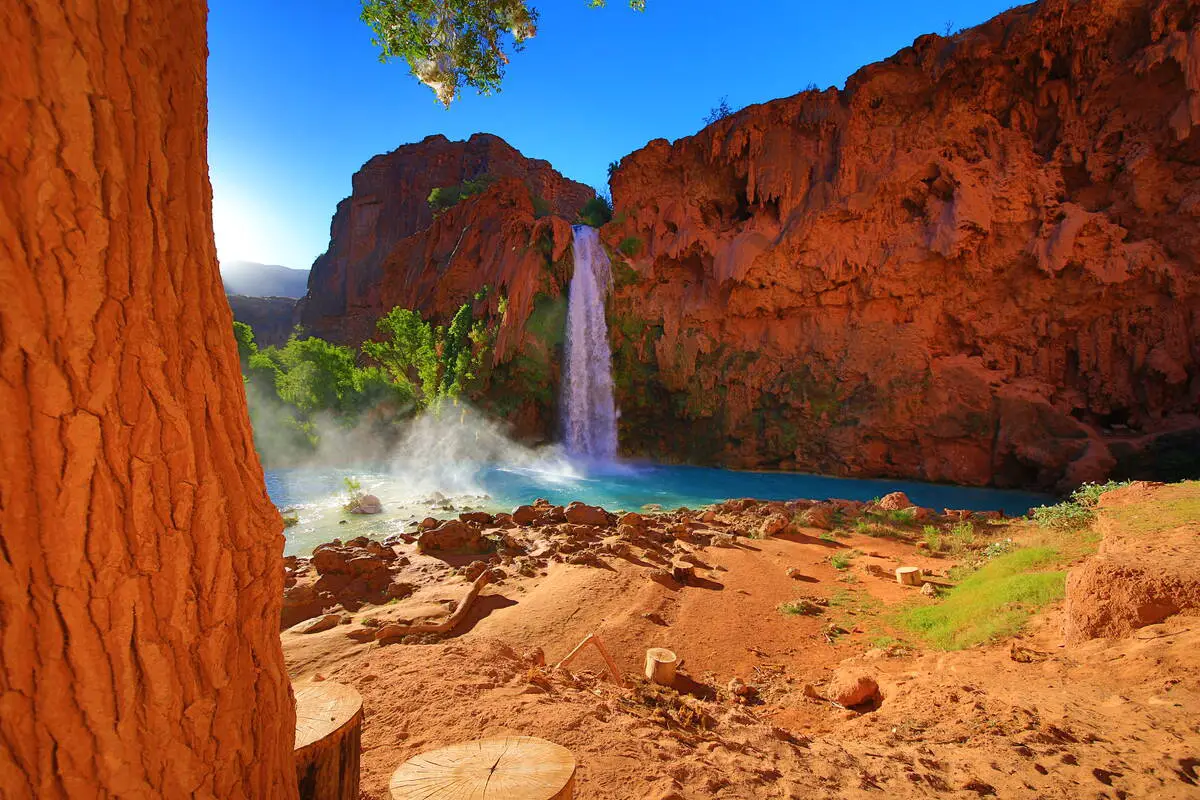
Wonders of North America
North America is a very diverse continent that extends from the northernmost land of the world to the moist tropical wilderness of Darien Gap. The most amazing wonders of North America are the prehistoric monuments of Mesoamerica, the geysers of Yellowstone, and colonial architecture.
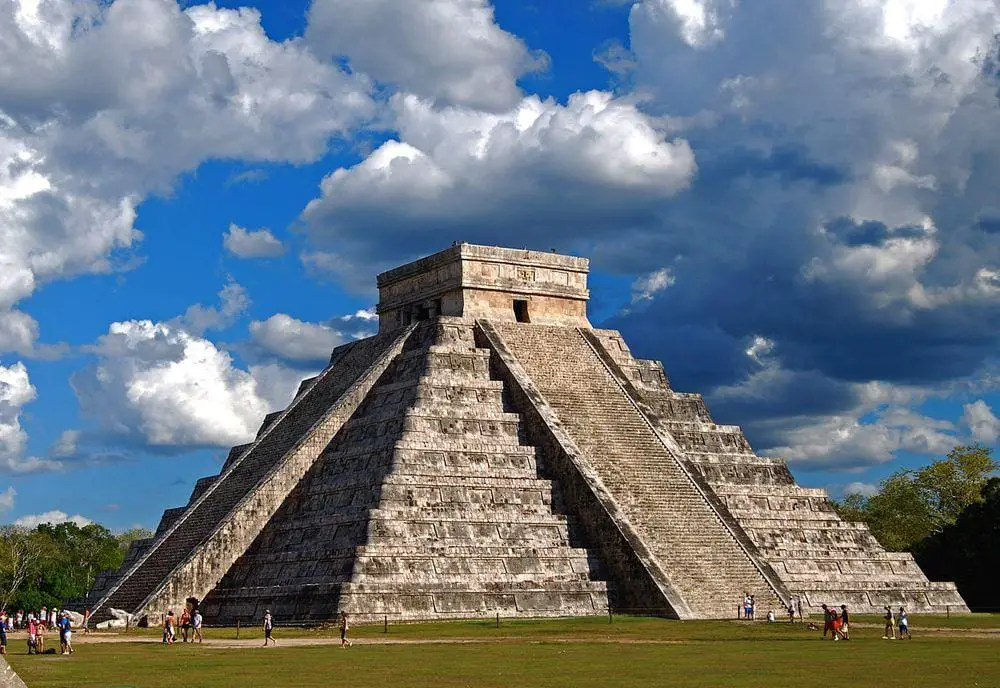
Wonders of Mexico
Few countries in the world can offer such an array of unique and astounding attractions as Mexico.
The area of this country was the cradle of several highly developed indigenous civilizations and some regions in the country are dotted with remnants of ancient cities with temples, palaces, and pyramids.
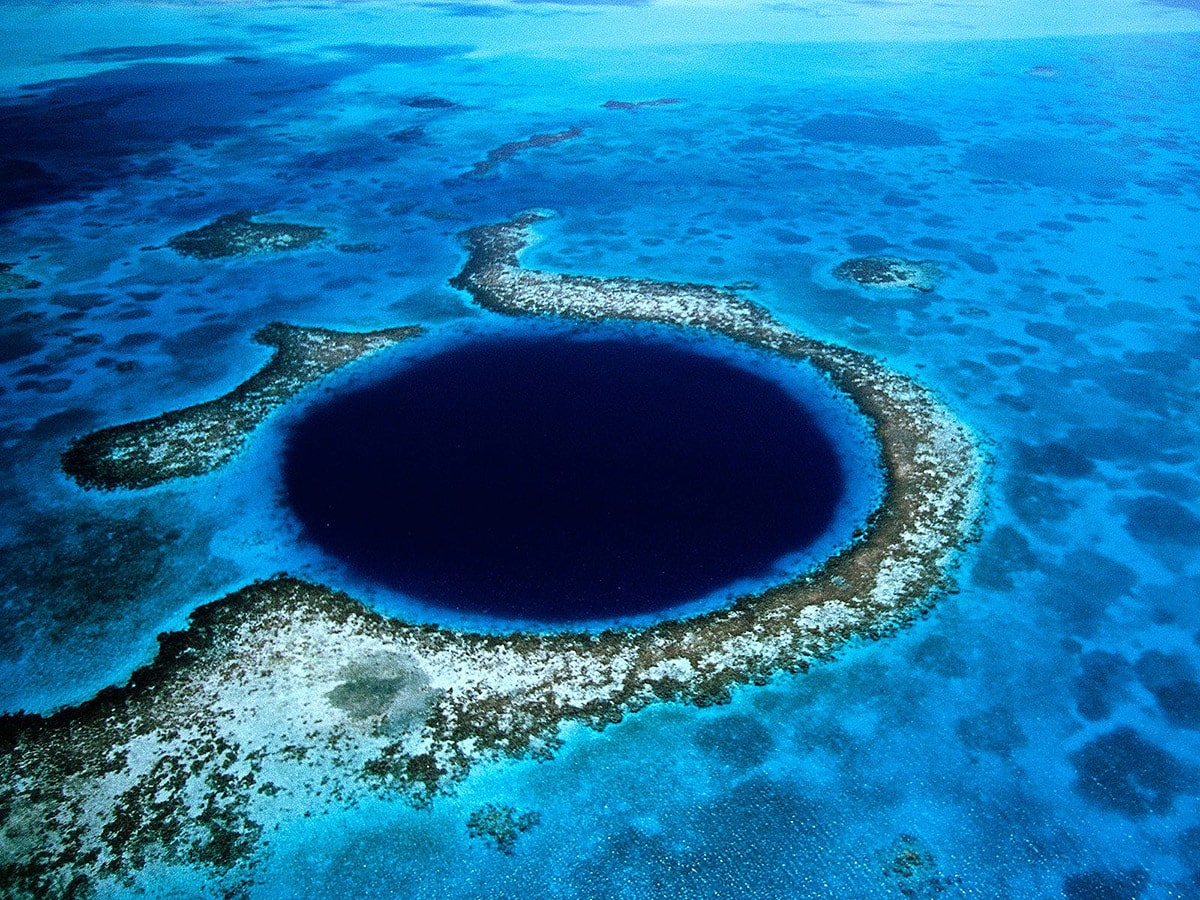
Sinkholes
This category includes outstanding sinkholes – large natural depressions or holes, which for most the part represent collapsed caves.
 Recommended books
Recommended books
Hypogene Karst Regions and Caves of the World
This book illustrates the diversity of hypogene speleogenetic processes and void-conduit patterns depending on variations of the geological environments by presenting regional and cave-specific case studies. The cases include both well-known and newly recognized hypogene karst regions and caves of the world. They all focus on geological, hydrogeological, geodynamical, and evolutionary contexts of hypogene speleogenesis.
Encyclopedia of Caves and Karst Science
The Encyclopedia of Caves and Karst Science contains 350 alphabetically arranged entries. The topics include cave and karst geoscience, cave archaeology and human use of caves, art in caves, hydrology and groundwater, cave and karst history, and conservation and management. The Encyclopedia is extensively illustrated with photographs, maps, diagrams, and tables, and has thematic content lists and a comprehensive index to facilitate searching and browsing.


